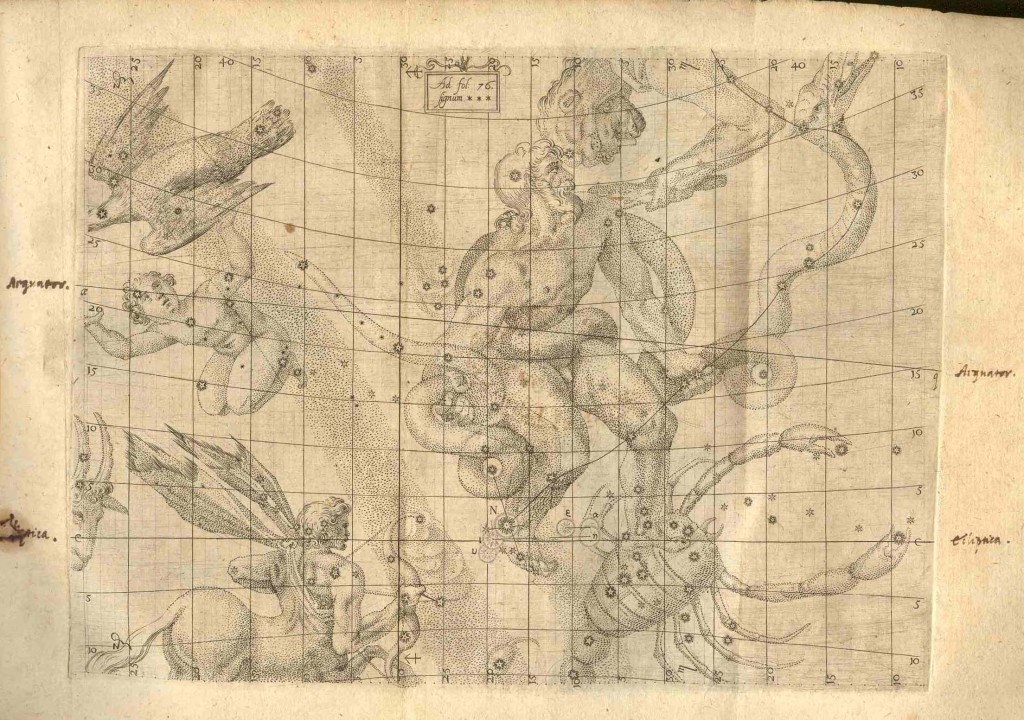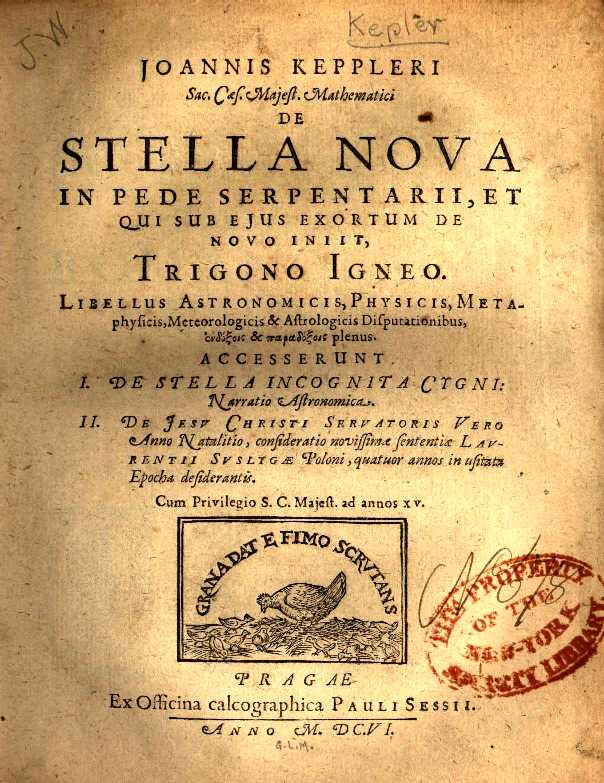On the evening of the 17th of October 1604, as the clouds finally lifted over the city of Prague to reveal a clear night sky, the German astronomer Johannes Kepler observed a new star in the feet of the Constellation of Serpens.
The supernova (now known as SN 1604) burned brightly through the night and was even visible the following morning. The star blazed and glittered “like the most beautiful and glorious torch ever seen when driven by a strong wind.”
- Depiction of the 1604 supernova in the constellation Serpens (labelled N in the foot, lower left) observed by Kepler (from ‘De stella nova,’ 1606)
Kepler, who was then serving as Imperial Mathematician to the Holy Roman Emperor Rudolf II, continued to chart the supernova for several months, making his last observation of the star a year later, after which it faded from view.
Kepler believed that the new star was a portent of deep significance. It was, he concluded, “an exceedingly wonderful work of God.” In 1606, he published a pamphlet, De stella nova in Pede Serpentarii (On the New Star in the Foot of Serpens), describing his discovery.
Kepler was convinced that the new star was the same as the one that the Three Kings followed on their way to Bethlehem. With somewhat tortured logic, he reasoned that the new star was the equivalent of one that appeared in the same constellation around the time of the birth of Christ. He identified the supernova with a star that appeared in a conjunction of Jupiter and Saturn during the years 7-5 B.C. Since the supernova of 1604 appeared in the same conjunction, he reasoned, it had to be the same as the Star of Bethlehem that showed the Magi the way to Jesus.
Kepler was one of the greatest scientists of the Renaissance. His discovery of the laws of planetary motion was one of the foundation stones of the Scientific Revolution. Yet he saw no inconsistency between science and religion, and was capable of deploying his mathematical genius to determine the correct birth date of Jesus.
If Kepler could believe in the Three Kings, perhaps we, even in our skeptical age, can read in the warmth and glow of this season a portent of peace, goodwill, and better times to come.
May the stars be favorable to you, and may you be as fortunate as Kepler as you gaze upon the heavens during these days and all the days of the New Year.
[Note: I am grateful to my friend and colleague Susana Gómez, of Madrid, who in a personal communication reminded me of Kepler’s discovery, thus giving me the idea for this post. Much scholarly (and non-scholarly) ink has been spilled over Kepler’s interpretation of SN 1604. For a nice short piece on the subject, see Martin Kemp, “Johannes Kepler on Christmas,” Nature 462, no. 7276 (December 24, 2009): 987. For a detailed discussion of the historical significance of Kepler’s discovery, see Robert S. Westman, The Copernican Question: Prognostication, Skepticism, and Celestial Order (Berkeley, 2011)].








A pedantic nominalist writes —
<>
Scientist? Renaissance? In 1600?
Even though these concepts were not invented for another 250 years, aren’t the chronology and implied motives a problem?
How about natural philosopher of the Reformation?
<>
Even though “Scientific Revolution” was not invented for another 350 years, isn’t it a misleading way to think about the period? How about “new philosophy”?
<>
As natural philosophy was subaltern to theology, for Protestants and Catholics alike, why should this be a problem? Only if we think in terms of the War Between Science and Religion, not invented for another 300 years.
Science and religion do not disagree. It just takes mankind a little while to figure things out.